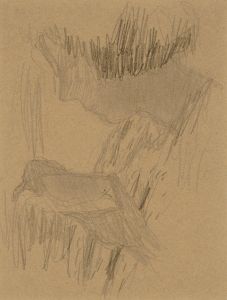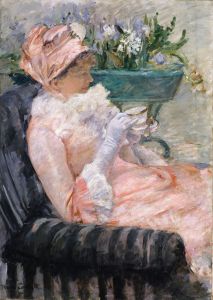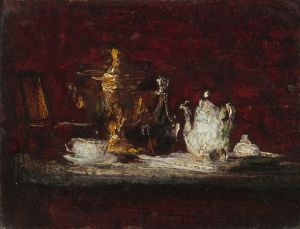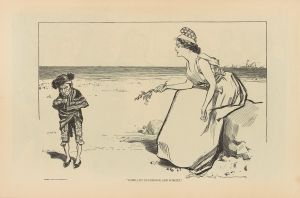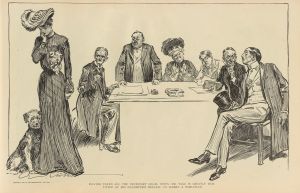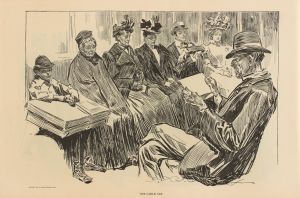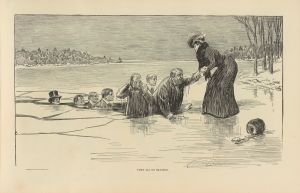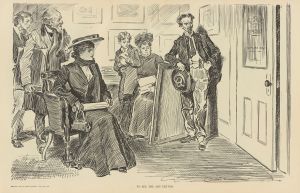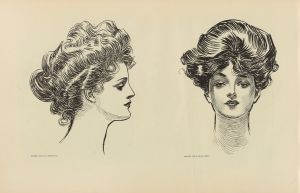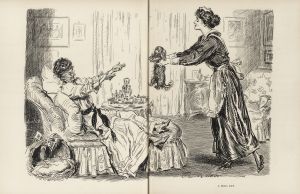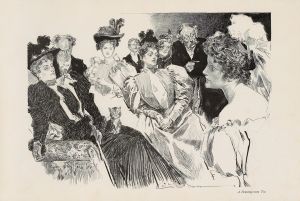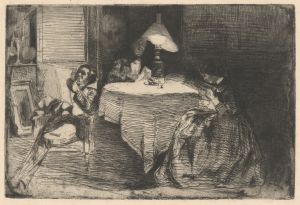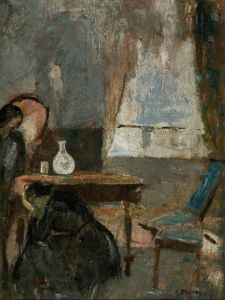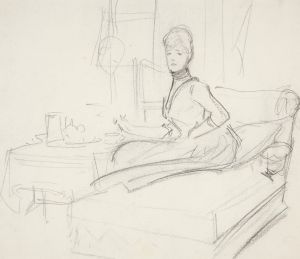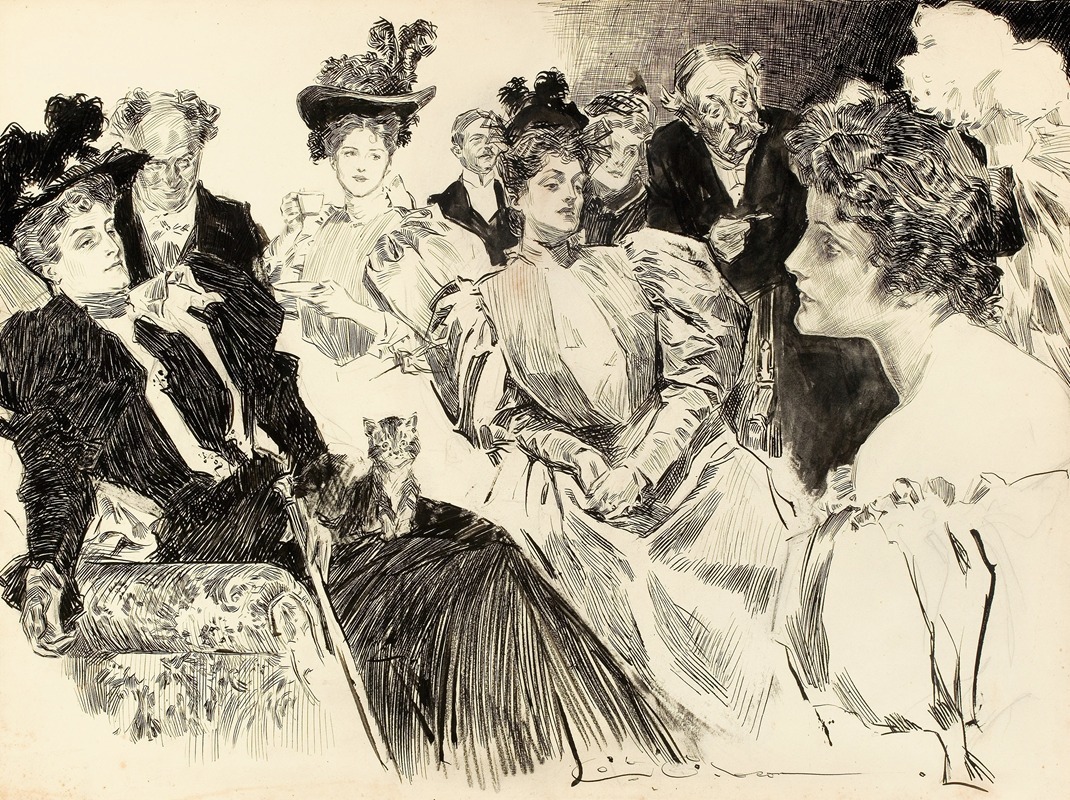
Tea Room
A hand-painted replica of Charles Dana Gibson’s masterpiece Tea Room, meticulously crafted by professional artists to capture the true essence of the original. Each piece is created with museum-quality canvas and rare mineral pigments, carefully painted by experienced artists with delicate brushstrokes and rich, layered colors to perfectly recreate the texture of the original artwork. Unlike machine-printed reproductions, this hand-painted version brings the painting to life, infused with the artist’s emotions and skill in every stroke. Whether for personal collection or home decoration, it instantly elevates the artistic atmosphere of any space.
Charles Dana Gibson was an American illustrator best known for his creation of the "Gibson Girl," an iconic representation of the American woman at the turn of the 20th century. His work was widely published in magazines such as Life, Harper's Weekly, and Scribner's, and he became one of the most influential illustrators of his time. Among his many works, "Tea Room" is one of the illustrations that captures the essence of the social settings of the era.
"Tea Room" by Charles Dana Gibson is an illustration that reflects the social customs and cultural milieu of the late 19th and early 20th centuries. Gibson's illustrations often depicted scenes from the lives of the upper and middle classes, and "Tea Room" is no exception. The artwork typically portrays a group of elegantly dressed women and men gathered in a refined setting, engaging in conversation and enjoying tea. This setting was a common social activity during the period, where people would meet to discuss various topics, socialize, and network.
The "Tea Room" illustration is characterized by Gibson's signature pen-and-ink style, which is marked by its detailed line work and expressive characters. His ability to capture the nuances of fashion, posture, and facial expressions made his illustrations particularly engaging and relatable to his audience. The women in his illustrations, often referred to as "Gibson Girls," were depicted as independent, confident, and fashionable, embodying the idealized image of American womanhood at the time.
Gibson's work, including "Tea Room," played a significant role in shaping public perceptions of gender roles and social norms. The "Gibson Girl" became a cultural phenomenon, influencing fashion and societal expectations for women. These illustrations often showed women in active roles, participating in social events, and engaging with men on equal terms, which was a progressive portrayal for the era.
The popularity of Gibson's illustrations, including "Tea Room," can be attributed to their reflection of contemporary society and their aspirational qualities. They offered a glimpse into the lives of the affluent and served as a form of social commentary. The settings and characters in his work were often idealized, yet they resonated with the public's aspirations and the evolving roles of women in society.
While specific details about the "Tea Room" illustration, such as its exact publication date or the particular magazine it appeared in, may not be readily available, it is representative of Gibson's broader body of work. His illustrations were widely circulated and contributed to the visual culture of the time, leaving a lasting impact on American art and society.
In summary, "Tea Room" by Charles Dana Gibson is an exemplary piece that showcases the artist's skill in capturing the social dynamics and cultural trends of his era. Through his detailed and expressive illustrations, Gibson not only entertained but also influenced the perceptions and aspirations of his contemporaries, making his work an important part of American art history.





